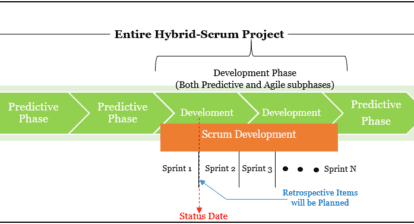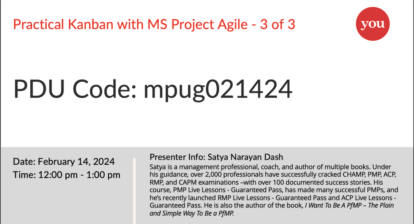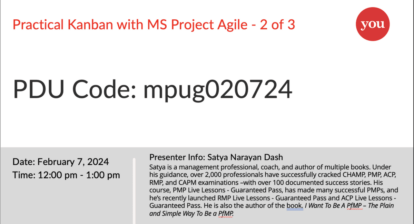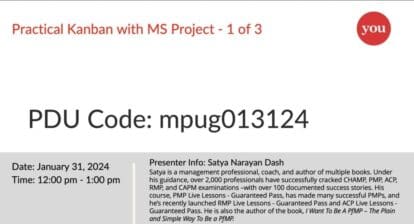Efficiency, Quality, and Simplicity for Project Success
Let’s Start With a StoryIf you write, you probably use the circumstances you encounter in your life as fodder for your work. This article originates from a combination of events. First, our last article touched on waste in the context of lean. Second, I am the father of a recent engineering graduate who is now working as an engineer, and part of the onboarding was a class on lean. The class began by asking the students to draw a pig. The variation in pigs produced was quite disparate. Understanding variation is essential to engineering and a fundamental concept of lean; upon first blush, this exercise seems to demonstrate the idea of variation.
In the next step, the students are asked to draw a pig based on steps written out, an analog of a specification. Engineers use specifications to define and constrain the product or system under development and to be manufactured. The problem, as with all written material and specifications, is interpreting the written word. For example, an instruction to draw an arc, presumedly an ear, can be construed as a convex or a concave arc associated with some specific point. My kid, true to form, was the one person who oriented the arc in a way contrary to drawing the pig’s belly – making it look starved. This is the nature of specification interpretation. There are several ways to mitigate the outcomes of these interpretations, but this article is not about that. Perhaps another piece in the future. It is sufficient to take away from this story:
- Variation is an essential concept for engineers – and onboarding training of new engineers is essential.
- Training is only part of the solution; the work environment (culture) and methods will significantly influence it.
- Never assume that what is written will constrain the variation in the manner you want.
Decoding the DNA of Lean
Lean, with its origins in the Toyota Production System (TPS) of the 1950s, is anchored in three cardinal principles: eliminating waste (Muda), ensuring smooth flow (Mura), and relentlessly pursuing perfection. The overarching goal? Deliver more value to customers with fewer resources while nurturing a culture of continuous improvement. The benefits of lean having been proven, lean then rippled its way into project management through Agile approaches such as Scrum that are applied mainly but not exclusively to software product development. We show some examples other than software in our Scrum Project Management book.
Overview
In the fast-paced world of project management, efficiency and quality are paramount. The need to complete projects on time, within budget, and to the highest standards is ever-present. This is where Lean principles come into play. Often associated with manufacturing and process optimization, Lean offers valuable strategies and practices that can be applied to project management, resulting in smoother operations, reduced waste, and increased success rates. In this article, we’ll explore the core concepts of Lean and how they can revolutionize project management.
The Essence of Lean
Lean, initially developed by Toyota in the 1950s as the Toyota Production System (TPS), revolves around eliminating waste, ensuring smooth and continuous flow, and relentlessly pursuing perfection. To achieve these goals, Lean focuses on three fundamental types of waste: Muda, Mura, and Muri.
Muda – Eliminating Waste
In project management, Muda refers to any activity that consumes resources (time, money, effort) without adding value to the project. Recognizing and eliminating Muda is essential for streamlining project workflows. Common sources of Muda in project management include:
- Excessive meetings and paperwork
- Duplication of tasks and efforts
- Waiting time and idle resources
- Overproduction of reports or documentation
Project managers can free up resources, improve productivity, and focus on value-added tasks by identifying and reducing these wasteful activities. Some organizations have process documentation to guide how the work is performed. Sometimes these processes help reduce waste, and sometimes the project will not require these processes, thus amounting to waste.
Mura – Ensuring Smooth Flow
Mura refers to variations or irregularities in work processes that disrupt workflow. These variations can lead to inefficiencies, bottlenecks, and unpredictable project outcomes. To combat Mura in project management:
- Standardize project processes and workflows
- Balance workloads and allocate resources efficiently
- Use visual management tools like Kanban boards to monitor progress and identify deviations
Project managers can create a smoother project flow by minimizing Mura, making it easier to deliver results predictably and on schedule. Those same organizational process standards and workflow descriptions can help smooth the workflow. Whether there are formal process descriptions or not, it is incumbent upon the project manager to understand the workflow, not just the start of the workflow or things that must be in place for a project to start.
Muri – Avoiding Overburden
Muri involves overburdening resources or individuals with excessive workloads, leading to burnout, errors, and delays. In project management, Muri can occur when team members are assigned too many tasks or unrealistic deadlines. To address Muri:
- Carefully plan and allocate tasks based on resource capacity
- Implement workload leveling to avoid resource bottlenecks
- Encourage a culture of work-life balance and well-being within the team
Eliminating Muri facilitates smooth flow, prevents team member burnout, and ensures that projects progress steadily and efficiently. Most project managers have probably experienced those work periods where we have team members working around the clock, or long hours during what would typically be considered off-work times. This is not sustainable and is an example of overburden.
The Seven Wastes
In addition to the Three Ms, Lean also identifies Seven Wastes, also known as the “7 Deadly Wastes.” These are specific categories of waste commonly found in processes:
- Transportation: Unnecessary movement or transportation of materials or information.
- Inventory: Excess work-in-progress or stored items.
- Motion: Unnecessary physical movement or actions.
- Waiting: Delays caused by idle time.
- Overproduction: Producing more than needed.
- Overprocessing: Performing non-value-adding activities.
- Defects: Errors requiring correction or rework.
Identifying and addressing these wastes is key to Lean’s quest for efficiency and quality. In product development, some people may believe that it constitutes excessive work in progress when it’s required that the technical specification for the product be complete before development can begin. From experience, this approach often results in the reworking of the specification, which is the real culprit.
The Power of Kanban
Kanban, often regarded as the jewel in Lean’s crown, is a visual management tool that facilitates the orchestration of work processes (work in progress or WIP). Originating from Japan, “Kanban ” means “visual signal.”
In project management, Kanban boards are the go-to tool. These visual boards represent workflows, tasks, and their statuses. Each task is depicted as a card moved through columns representing completion stages. Team members can readily see what needs to be done, what’s in progress, and what’s completed.
Kanban provides several advantages:
- Visual Clarity: Everyone in the team can see the project’s status, promoting transparency and collaboration.
- Efficiency: Tasks are pulled as needed, preventing overloading and optimizing resources.
- Flexibility: Kanban is adaptable to various project types and sizes.
Continuous Improvement: Teams are encouraged to analyze and refine their processes continually.
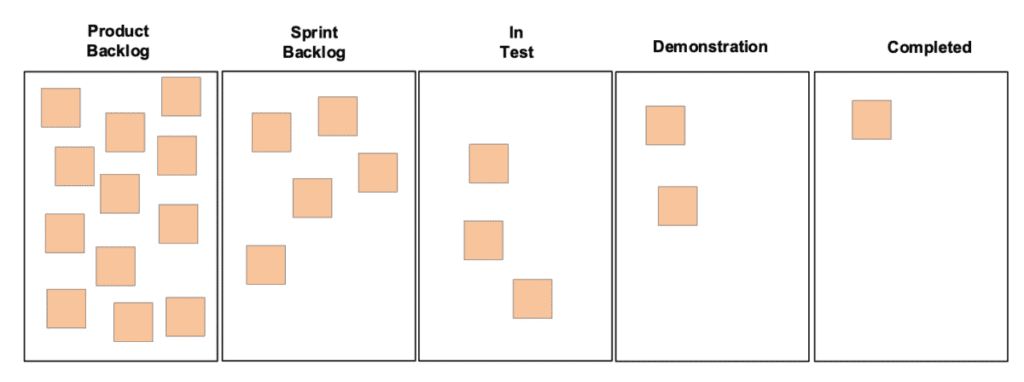
Understanding the workflow in general overview and detailed overview will go a long way in managing the work to success. Specifically, in what state is the work product or at what point in the workflow. This need for understanding workflow and work product state also applies to conventional project approaches. Essentially the work product movement is a metric for tracking the project’s progress. From experience, this lack of tracking is one of the reasons for finding out at the last minute the “surprise” of late project delivery.
Practical Steps for Applying Lean Principles in Project Management
So, how can project managers integrate Lean principles into their workflow to achieve optimal results? Here are some practical steps:
- Value Stream Mapping: Map out the entire project process to identify value-adding and non-value-adding activities. This helps eliminate Muda and optimize workflows.
- Kanban: Use Kanban boards to visualize tasks, prioritize work, and maintain a steady project flow. Team members can see their responsibilities and the status of tasks, reducing confusion and inefficiencies.
- Continuous Improvement: Foster a culture of continuous improvement within the project team. Encourage team members to identify and address issues as they arise, preventing the accumulation of waste over time.
- Resource Management: Carefully plan and allocate resources based on their capabilities and capacity. Avoid overloading team members with excessive work to prevent Muri.
- Standardization: Standardize project processes and documentation to reduce Mura. Clearly defined procedures help maintain consistency and predictability.
- Feedback Loops: Establish regular feedback mechanisms to identify areas for improvement. Involve team members in the process to gather insights and make necessary adjustments.
Lean and Software Projects
The Lean Principles apply to software projects with one additional principle: Determine Customer Value. This principle focuses on what the customer values and could be included in all projects. The necessary information can be obtained by user groups, research, and understanding the problem the software aims to solve. Become customer-centric.
Applying Lean principles should also look at Quality Testing procedures. Create a Value Stream map of the Testing process. Capture any duplication or possible non-value-added steps. And what about the process of handling defects? What about Standardization?
Steps to Create a Lean Project Schedule
Creating a project schedule for Lean Project Management is different than a traditional project schedule. Lean focuses on flexibility, flow, and customer value.
Here are steps to create a project schedule using Lean principles:
- Understand Customer Value: Start by identifying what the customer values most in your project. This is crucial as Lean is customer-centric. Understanding customer priorities will guide your scheduling decisions.
- Break Down the Project into Value-Adding Activities: Decompose the project into smaller, value-adding activities or tasks. These should align with the customer’s needs and Project Goals. Avoid including activities that don’t directly contribute to customer value.
- Prioritize Tasks: Use customer feedback and Project Goals to prioritize tasks. Focus on delivering the highest-value tasks first. You can employ techniques like MSCW (Must-haves, Should-haves, Could-haves, Won’t-haves) to categorize and prioritize tasks.
- Implement a Pull System: Instead of assigning specific dates to tasks upfront, use a pull system (Kanban). Tasks are scheduled based on customer demand and team capacity. This means tasks are pulled into the schedule as they become necessary.
- Use Kanban or Visual Management: Implement a Kanban board or another visual management tool to visualize the flow of work. Tasks are placed in columns representing different stages of development. This allows teams to see the work in progress and pull in tasks when they have capacity.
- Set Work in Progress (WIP) Limits: Define WIP limits for each column on the Kanban board. This helps prevent overloading teams and maintains a steady flow of work. If a column reaches its WIP limit, no new tasks can be added until some are completed.
- Maintain Flexibility: Lean schedules are flexible and adaptive. If a high-priority task emerges, or customer needs change, the team can adjust the schedule accordingly. The focus is on responding to customer demand.
- Frequent Reviews and Retrospectives: Schedule regular reviews and retrospectives to evaluate the progress of the project. This helps identify bottlenecks, areas for improvement, and opportunities to adjust the schedule as needed.
- Iterate and Improve: Continuously improve the scheduling process based on feedback and data. Look for ways to streamline the flow of work and reduce lead times.
- Customer Feedback Loop: Maintain a feedback loop with customers throughout the project. Gather their input on completed tasks to inform future scheduling decisions.
- Limit Multi-tasking: Encourage team members to work on one task at a time rather than multitasking. This can improve focus and reduce context switching, leading to more efficient work.
- Use Lean Metrics: Implement Lean metrics like cycle time and lead time to measure the effectiveness of your scheduling process. These metrics provide insights into how long it takes to complete tasks and deliver customer value.
- Adapt and Evolve: Lean project scheduling is a dynamic process. Be prepared to adapt and evolve your schedule as the project progresses and customer needs change.
Conclusion
Lean principles offer project managers a systematic approach to achieving efficiency, quality, and simplicity in their projects. By eliminating waste (Muda), ensuring smooth flow (Mura), and avoiding overburden (Muri), Lean can significantly enhance project outcomes. These principles allow project managers to navigate complex projects with agility, deliver superior results, and meet or exceed client expectations. Embracing Lean is more than a methodology; it’s a journey toward continuous improvement and project management excellence.





